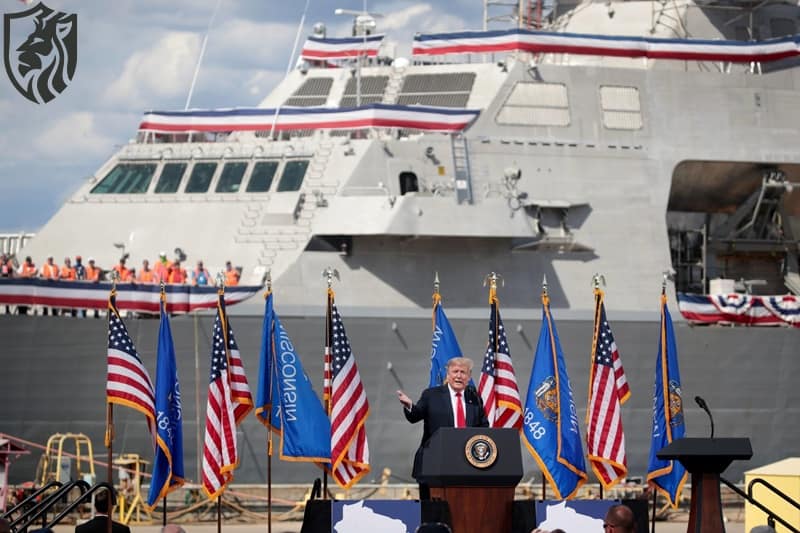
Morocco's Quest for Submarine
“Morocco’s quest stands at a pivotal moment in its naval ambitions,” said Mr Ahmed Toufiq, a Rabat-based maritime analyst, in an interview with Military Africa earlier this year.
“The acquisition of submarines would be a major step forward for the Royal Moroccan Navy.” For a country that has long sought to strengthen its maritime presence, adding two submarines to its fleet has sparked fierce competition among some of the world’s leading defense contractors.
France’s Naval Group and Germany’s ThyssenKrupp Marine Systems [TKMS] are leading the way, each providing cutting-edge underwater technology to meet Morocco’s strategic requirements.
The Royal Moroccan Navy is not new to pursuing submarines. El Confidencial Digital, a Spanish outlet, reported in February 2025 that this goal has been “an old dream” for the kingdom but has gained urgency due to shifting regional dynamics.
As Morocco considers its options, the decision could reshape its naval capabilities and impact its global partnerships. Naval Group, a French naval engineering titan, has proposed its Scorpène-class submarine as the ideal fit for Morocco.
Agenzia Nova
“The Scorpène offers unparalleled stealth and adaptability,” a Naval Group spokesperson told Agenzia Nova on February 27, 2025. Designed in collaboration with Spain’s Navantia, this diesel-electric submarine has already won over navies in Chile, Malaysia, Brazil, and India, demonstrating its global dependability.
The Scorpène comes in several versions, but the version marketed to Morocco is likely to include advanced features such as lithium-ion batteries, which improve underwater endurance.
The base CM-2000 model measures approximately 217 feet in length, but with the AM-2000 air-independent propulsion configuration, it can extend to 231 feet.

With a submerged displacement of 1,600 to 2,000 tonnes, the Scorpène houses 31 crew and carries up to 18 weapons. It features six 533 mm torpedo tubes and a modern French combat system for enhanced targeting and engagement. The Thales S-Cube sonar suite provides precise detection and targeting capabilities in complex maritime environments.
Naval Group’s advantage is both technological and historical, built on years of cooperation with Morocco’s armed forces. In 2014, the company delivered a multi-mission frigate to Morocco, strengthening bilateral naval ties. By 2022, Naval Group emerged as the frontrunner to manage a new shipyard in Casablanca.
ThyssenKrupp Marine Systems
This potential shipyard could further boost Franco-Moroccan naval cooperation. A Naval Group spokesperson stated, “Our relationship with Morocco is based on trust and proven results.” The statement hinted at a broader industrial partnership if the Scorpène deal moves forward.
ThyssenKrupp Marine Systems entered the competition with two options: the HDW Class Dolphin AIP and the HDW Class 209/1400mod. “Our submarines deliver high operational value,” TKMS stated on its website. The company highlighted endurance and versatility as key strengths for Morocco’s maritime priorities.
The Dolphin AIP measures around 223 feet long and displaces 2,050 tonnes when submerged. It uses an air-independent propulsion system powered by fuel cells for extended underwater endurance. This technology enables the submarine to remain submerged for weeks while keeping a low acoustic signature.
The Dolphin AIP carries six 533 mm torpedo tubes and four larger 650 mm tubes. These tubes can launch torpedoes, missiles, and mines, giving the platform diverse offensive capabilities.
Its ISUS 90-1 combat system integrates sonar, navigation, and weapon control for maximum effectiveness. Already serving in Israel’s navy, the Dolphin AIP represents TKMS’ most advanced submarine technology.
Rear Adm. [Ret.] Hans Müller
In contrast, the HDW Class 209/1400mod is a more seasoned design. At 204 feet and 1,450 tonnes submerged, it lacks the AIP system but has a proven track record, having delivered over 60 units to 14 countries since the 1970s.
Its simpler diesel-electric propulsion keeps costs low while maintaining dependability, with six 533 mm torpedo tubes and a capacity for 14 torpedoes or missiles.
“The 209 is a workhorse,” Rear Adm. [Ret.] Hans Müller, a former German naval officer, told Military Embedded Systems in an interview last year.
Rear Adm. [Ret.] Hans Müller, a former German naval officer, said, “The 209 is a workhorse; it’s not as flashy, but it accomplishes its tasks effectively.”
The dual approach of TKMS, which provides both a high-tech and a low-cost option, may allow Morocco to make more informed decisions while balancing capability and cost.
While France and Germany are the front-runners, other countries have entered the race. Russia has pitched its Amur 1650, a fourth-generation diesel-electric submarine with AIP potential, but has yet to find a buyer since its initial offer to Morocco in 2013.
Morocco isn’t locked
Meanwhile, Greece and Portugal have proposed the use of secondhand submarines as a cost-effective solution for a navy that is in the process of developing its underwater expertise.
“These alternatives show Morocco isn’t locked into one path,” Mr Toufiq said, implying Rabat is considering both new construction and pre-owned vessels.
Morocco’s quest for submarines comes amid regional rivalries, particularly with Algeria, its eastern neighbour. The Algerian Navy maintains a large fleet, which includes Kilo-class submarines outfitted with Klub-S missiles capable of striking land targets from underwater.
“Algeria’s capabilities have long been a benchmark,” said Ms Fatima Zahra, a North Africa security expert at Washington’s Centre for Strategic Studies, in an email. “Morocco wants to ensure it can protect its waters and assert its presence.”

With 81,000 square nautical miles of exclusive economic zone to protect and the strategic Strait of Gibraltar to monitor, submarines would provide Morocco with three-dimensional naval reach.
Royal Moroccan Navy
The Royal Moroccan Navy has also indicated plans to acquire anti-submarine aircraft, pointing to the broader modernisation push announced for 2022.
Analysts caution against viewing the conflict as a simple arms race. “Both nations have legitimate maritime interests,” Ms Zahra stated. “Morocco’s move reflects its priorities, not just a reaction.”
Morocco’s leadership has emphasised economic security and coastal defence, both of which submarines could play an important role in.
Stakeholders in Morocco see the purchase as more than just a military upgrade. Mr Youssef Benali, a fisherman from Tangier, told local media last month that “stronger ships mean safer waters for us.”
In contrast, some taxpayers question the expense. “We need schools and roads too,” said Ms Amina El Idrissi, a Marrakesh teacher, in a recent street interview with Le Desk. The debate highlights the delicate balance Moroccans must strike between defense and domestic needs.
The competition has generated interest on a global scale. In a February 2025 podcast, Mr Paul Deschamps, a defense consultant based in Paris, asserted that Naval Group has an advantage due to its connections in Casablanca.
A Naval Group
“But TKMS’s reliability could sway Rabat if cost becomes a factor,” he added, reflecting the deal’s ongoing uncertainty.
Morocco’s choice of supplier could cement a decades-long partnership. A Naval Group victory would strengthen France’s position in Morocco’s defense, potentially affecting the future of the Casablanca shipyard.
A TKMS win could broaden Morocco’s alliances, bringing it closer to Germany’s industrial base. In either case, the kingdom will benefit from advanced technology and, potentially, local manufacturing opportunities.
For the companies, the stakes are equally significant. “This exceeds two submarines,” wrote Ms Claire Dupont, a European defense analyst, in an email to this publication.
Conclusion
“It’s a foothold in North Africa’s growing market.” Given that other regional players like Egypt and Algeria already have the necessary equipment, Morocco’s quest may influence future contracts.
As of March 3, 2025, the Royal Moroccan Navy had not announced a final decision. The Royal Moroccan Navy continues to deliberate, weighing capability, cost, and strategic fit. Currently, the world is observing Morocco as it navigates through the waters.
References
- Military Africa—Morocco’s Submarine Acquisition
- El Confidencial Digital—Morocco’s Submarine Ambitions
- Agenzia Nova – Naval Group’s Scorpène Pitch
- TKMS Official Website – Submarine Capabilities
- Military Embedded Systems – Rear Adm. Hans Müller on HDW 209
- Le Desk – Public Opinion on Defence Spending
- Centre for Strategic Studies – Fatima Zahra on Morocco’s Security Goals
- Podcast by Paul Deschamps – France vs Germany in Morocco
- Email Interview – Claire Dupont, European Defence Analyst









